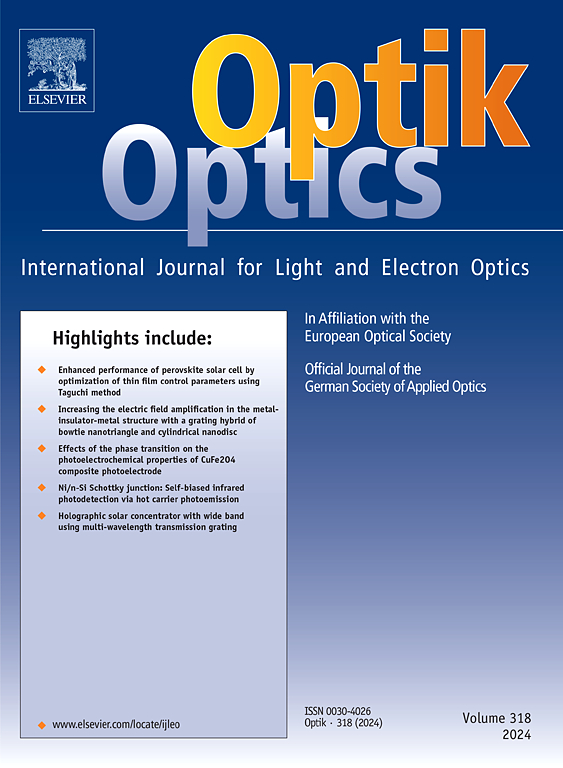广义导数共振非线性Schrödinger方程新三五次孤子波结构的稳定性分析与解析提取
IF 3.1
3区 物理与天体物理
Q2 Engineering
引用次数: 0
摘要
本文研究了广义导数共振非线性Schrödinger方程的解析解,该方程是控制波在非线性色散介质中传播的基本模型,在非线性光学、量子力学和等离子体物理中具有广泛的应用。我们采用了一种改进的扩展直接代数方法来系统地推导精确解,扩展了传统的方法来纳入三次五次非线性,这解释了自聚焦和散焦效应之间的相互作用。通过将广义导数共振非线性Schrödinger方程转化为可积代数形式,得到了明亮孤子、暗孤子、奇异孤子、周期波、有理解、指数解、Jacobi和weerstrass椭圆函数等多种解析解。这些解决方案为非线性系统中局域波结构的形成和动力学提供了深入的见解。然后,我们通过线性摄动理论对得到的孤子进行了严格的稳定性分析,确定了发生稳定传播的关键参数区域。稳定性阈值基本上取决于三次自聚焦和五次离焦效应之间的平衡。为了验证我们的结果,我们给出了所选解的数值模拟和图形表示,说明了它们的稳定性和传播特性。我们的发现有助于从理论上理解非线性波现象,并在光通信、量子信息和超快激光物理中提供潜在的应用。这项工作不仅推进了广义导数共振非线性Schrödinger方程的解析处理,而且为探索数学物理中其他高阶非线性发展方程提供了一个强大的框架。本文章由计算机程序翻译,如有差异,请以英文原文为准。
Stability analysis and extraction of newly cubic–quintic soliton wave structure for the generalized derivative resonant nonlinear Schrödinger equation through an analytical technique
This study investigates the analytical solutions of the generalized derivative resonant nonlinear Schrödinger equation, a fundamental model governing wave propagation in nonlinear dispersive media with applications in nonlinear optics, quantum mechanics, and plasma physics. We employ a modified extended direct algebraic method to systematically derive exact solutions, extending traditional approaches to incorporate cubic–quintic nonlinearity, which accounts for the interplay between self-focusing and defocusing effects.
By transforming the generalized derivative resonant nonlinear Schrödinger equation into an integrable algebraic form, we obtain a diverse set of analytical solutions, including bright and dark solitons, singular solitons, periodic waves, rational solutions, exponential solutions, Jacobi and Weierstrass elliptic functions. These solutions provide deep insights into the formation and dynamics of localized wave structures in nonlinear systems. We then conduct a rigorous stability analysis of the obtained solitons through linear perturbation theory, identifying critical parameter regimes where stable propagation occurs. The stability thresholds are shown to depend fundamentally on the balance between cubic self-focusing and quintic defocusing effects. To validate our results, we present numerical simulations and graphical representations of selected solutions, illustrating their stability and propagation characteristics. Our findings contribute to the theoretical understanding of nonlinear wave phenomena and offer potential applications in optical communications, quantum information, and ultrafast laser physics. This work not only advances the analytical treatment of the generalized derivative resonant nonlinear Schrödinger equation but also provides a robust framework for exploring other high-order nonlinear evolution equations in mathematical physics.
求助全文
通过发布文献求助,成功后即可免费获取论文全文。
去求助
来源期刊

Optik
物理-光学
CiteScore
6.90
自引率
12.90%
发文量
1471
审稿时长
46 days
期刊介绍:
Optik publishes articles on all subjects related to light and electron optics and offers a survey on the state of research and technical development within the following fields:
Optics:
-Optics design, geometrical and beam optics, wave optics-
Optical and micro-optical components, diffractive optics, devices and systems-
Photoelectric and optoelectronic devices-
Optical properties of materials, nonlinear optics, wave propagation and transmission in homogeneous and inhomogeneous materials-
Information optics, image formation and processing, holographic techniques, microscopes and spectrometer techniques, and image analysis-
Optical testing and measuring techniques-
Optical communication and computing-
Physiological optics-
As well as other related topics.
 求助内容:
求助内容: 应助结果提醒方式:
应助结果提醒方式:


